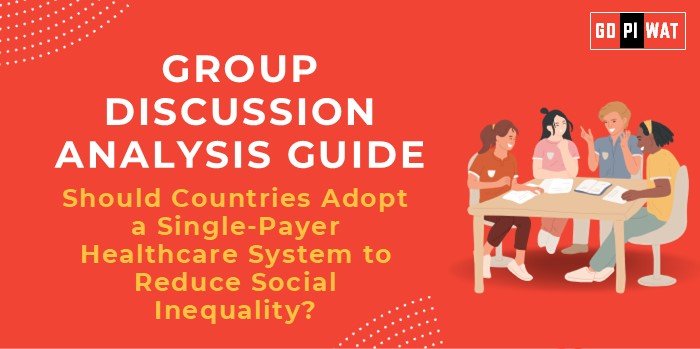🏥 Should Countries Adopt a Single-Payer Healthcare System to Reduce Social Inequality?
🌐 Introduction to the Topic
Opening Context: Healthcare inequality remains a pressing global issue. With rising healthcare costs and disparities in access, the debate on adopting a single-payer healthcare system is gaining momentum worldwide.
Topic Background: A single-payer healthcare system involves a government-managed fund providing healthcare for all citizens. Countries like Canada and the UK have implemented it, demonstrating its potential to reduce inequality but also revealing operational challenges.
📊 Quick Facts and Key Statistics
- 🌍 Global Healthcare Spending: $8.3 trillion annually; inequities persist across countries (WHO, 2023).
- 💵 Out-of-Pocket Expenditure: Constitutes 18% of total health spending in OECD nations, with higher shares in developing countries.
- 📈 Life Expectancy Gap: 15 years between high-income and low-income nations (UNDP, 2022).
- 🇨🇦 Single-Payer Models: Canada spends 10.9% of GDP on healthcare, achieving universal coverage (WHO, 2023).
👥 Stakeholders and Their Roles
- Government Agencies: Fund and regulate healthcare.
- Private Sector: Supplements public services through specialized care.
- Healthcare Professionals: Provide services across public and private sectors.
- Citizens: Demand quality care; advocate for or against reforms.
- NGOs and International Bodies: Influence policies and funding, like WHO initiatives.
🎯 Achievements and Challenges
🌟 Achievements:
- 🇨🇦 Canada: Reduced healthcare inequities with a single-payer system.
- 🇬🇧 UK (NHS): Universal access; life expectancy improvement.
- 🇮🇳 India (Ayushman Bharat): Early steps toward universal health coverage.
⚠️ Challenges:
- 💰 Funding: Higher taxes or public debt burdens.
- ⏳ Operational Bottlenecks: Waiting times in single-payer systems like the UK.
- 🌎 Global Comparisons: US struggles with universal coverage despite high spending.
- 📖 Case Study: Sweden’s well-funded system excels in equity but faces rural access issues.
📋 Structured Arguments for Discussion
- Supporting Stance: “A single-payer healthcare system ensures equitable access to care, as demonstrated by Canada’s universal coverage model.”
- Opposing Stance: “Single-payer systems often face long waiting times and funding challenges, as seen in the UK’s NHS.”
- Balanced Perspective: “While single-payer systems reduce inequality, operational inefficiencies and funding remain critical challenges.”
✨ Effective Discussion Approaches
- Opening Approaches:
- 📈 Start with a global disparity in healthcare spending and outcomes.
- 📝 Use a case study (e.g., Canada’s healthcare model) to highlight potential benefits.
- Counter-Argument Handling:
- Highlight alternative approaches like hybrid systems.
- Acknowledge data-backed drawbacks such as taxation issues.
🔍 Strategic Analysis of Strengths and Weaknesses
- Strengths: Universality, reduced out-of-pocket expenses.
- Weaknesses: Long wait times, high initial investment.
- Opportunities: Improved public health outcomes, international cooperation for best practices.
- Threats: Political resistance, economic downturns affecting funding.
📚 Connecting with B-School Applications
- Real-World Applications: Analyze healthcare financing and operational management in single-payer models for policy design.
- Sample Interview Questions:
- “How does a single-payer system impact economic productivity?”
- “Compare the US and Canadian healthcare systems in addressing inequality.”
- Insights for B-School Students: Focus on fiscal planning and the role of public-private partnerships in universal healthcare.


